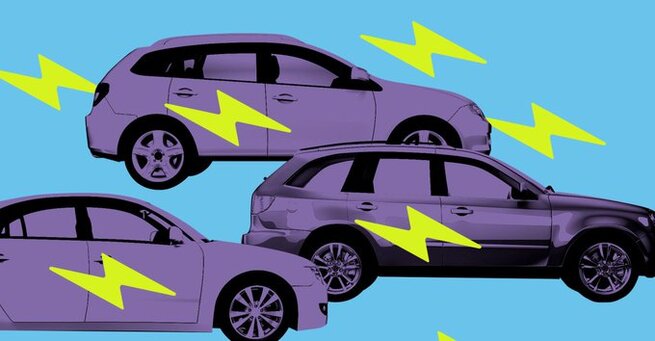
Uber will pay drivers $4,000 to switch to EVs as part of a bold push toward a fully electric future. The company hopes this move will accelerate its progress toward becoming 100% electric by 2030 in North America and Europe. With the federal EV tax credit recently expiring, Uber’s direct incentive aims to fill that financial gap and keep drivers motivated to make the green transition.
As Uber pursues its mission of zero-emission trips by 2030, the ride-hailing giant has launched a new “Go Electric” program offering $4,000 grants for drivers who trade in gas-powered vehicles for EVs. The initiative coincides with a rebrand—Uber Green is being replaced by the simpler, cleaner “Uber Electric.”
Uber originally vowed to stay carbon-neutral without directly paying drivers to switch. But growing challenges in the EV market and the loss of tax incentives have forced a rethink. The $4,000 grant represents Uber’s renewed commitment to a cleaner transportation ecosystem.
The decision to offer cash grants follows the expiration of the $7,500 federal EV tax credit in the U.S., which had been crucial for many rideshare drivers buying or leasing electric vehicles. Without that credit, EV affordability took a hit—especially for full-time drivers relying on cost-efficient vehicles.
To ease the transition, Uber will pay drivers $4,000 to switch to EVs in selected states, starting with New York, California, Colorado, and Massachusetts. These states already have strong local incentives such as Massachusetts’ MOR-EV and Colorado’s Clean Fleet Program, which can further lower EV prices when stacked with Uber’s bonus.
Not all drivers will qualify right away. Under the “Go Electric” plan, eligibility depends on driving history, market availability, and existing EV infrastructure support. Uber’s $4,000 offer matches the amount of the now-expired federal credit for used EVs, effectively plugging that gap for its network of independent drivers.
By pairing Uber’s grant with local rebates and discounts, many drivers could see thousands more in savings—potentially enough to make EVs as affordable as traditional vehicles.
Uber’s broader sustainability roadmap commits to 100% EV rides in major markets by 2030 and full carbon neutrality worldwide by 2040. Since 2020, the company has invested millions in charging partnerships and EV education. However, market slowdowns and declining tax incentives have made it harder for drivers to upgrade.
The new $4,000 grant directly addresses those barriers, ensuring Uber continues its path toward becoming an electric-first mobility platform. The shift also reinforces its image as a forward-looking company tackling climate challenges with real-world incentives.
Uber’s relationship with EV adoption has been a bumpy one. During the EV boom of 2021, the company partnered with Hertz to rent 100,000 Teslas to its drivers. That deal was meant to make EVs more accessible without requiring outright purchases. But fluctuating EV prices, supply chain issues, and high rental costs limited participation.
Now, by paying drivers directly, Uber is taking a more practical approach—offering financial freedom instead of just leasing options. This strategy gives drivers flexibility to choose any EV that fits their budget, from Teslas and Bolts to affordable used models.
The move positions Uber as a leader in sustainability within the gig economy. While Lyft and other competitors have made similar electric pledges, Uber’s decision to spend its own money sets a new precedent. Paying drivers $4,000 to switch to EVs sends a clear message: the company is willing to invest in its people to achieve its environmental goals.
For passengers, the benefits are clear—cleaner air, quieter rides, and potentially more affordable trips as EV maintenance costs drop. For drivers, the long-term savings on fuel and maintenance could easily outweigh initial switch costs, especially when combined with Uber’s grant and state-level incentives.
Uber’s $4,000 driver incentive marks a major shift in how rideshare companies approach electrification. By directly funding drivers instead of relying solely on policy support, Uber is creating a faster, fairer path to an all-electric future.
With Uber pledging to pay drivers $4,000 to switch to EVs, this program could reshape not just the company’s operations but also the broader rideshare industry—paving the way for a cleaner, more sustainable urban mobility era.


𝗦𝗲𝗺𝗮𝘀𝗼𝗰𝗶𝗮𝗹 𝗶𝘀 𝘄𝗵𝗲𝗿𝗲 𝗽𝗲𝗼𝗽𝗹𝗲 𝗰𝗼𝗻𝗻𝗲𝗰𝘁, 𝗴𝗿𝗼𝘄, 𝗮𝗻𝗱 𝗳𝗶𝗻𝗱 𝗼𝗽𝗽𝗼𝗿𝘁𝘂𝗻𝗶𝘁𝗶𝗲𝘀.
From jobs and gigs to communities, events, and real conversations — we bring people and ideas together in one simple, meaningful space.

Comments